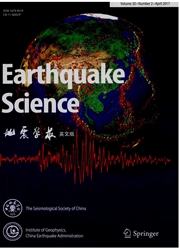

 中文摘要:
中文摘要:
Root-mean-square distance Drms with characteristic of weighted-average is introduced in this article firstly. Drms can be used to capture the general proximity of a site to a dipping fault plane comparing with the rupture distance Drup and the seismogenic distance Dseis. Then, using Drup, Dseis and Drms, the hanging wall/footwall effects on the peak ground acceleration (PGA) during the 1999 Chi-Chi earthquake are evaluated by regression analysis. The logarithm residual shows that the PGA on hanging wall is much greater than that on footwall at the same Drup or Dseis when the Drup or Dseis is used as site-to-source distance measure. In contrast, there is no significant difference between the PGA on hanging wall and that on footwall at the same Drms when Drms is used. This result confirms that the hanging wall/footwall effect is mainly a geometric effect caused by the asymmetry of dipping fault. Therefore, the hanging wall/footwall effect on the near-fault ground motions can be ignored in the future attenuation analysis if the root-mean-square distance Drms is used as the site-to-source distance measure.
 同期刊论文项目
同期刊论文项目
 同项目期刊论文
同项目期刊论文
 期刊信息
期刊信息
